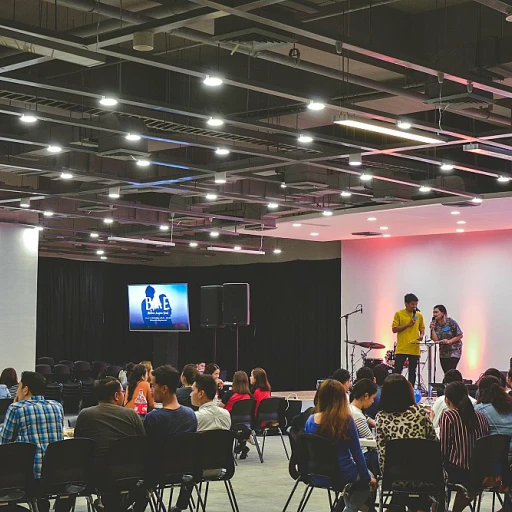
Understanding the Dynamics of Candidate Sourcing
Recognizing the Fluid Nature of Candidate Sourcing
The art and science of candidate sourcing involve a deep understanding of workforce forecasting and planning to address a company’s current workforce and predict future staffing needs. It's crucial to begin with a comprehensive analysis of your business goals and the skills your company requires to achieve them. Understanding these dynamics helps align your talent acquisition strategies with broader business objectives.
Resource management plays a pivotal role in candidate sourcing. Effective workforce planning involves utilizing various techniques such as demand forecasting and historical data analysis to predict future talent needs. By looking at trends over time, organizations can ensure they have the right mix of skills and resources when they need them. This not only aids in meeting future staffing demands but also ensures that the supply of talent aligns with the business's strategic goals.
One of the complexities of candidate sourcing is addressing fluctuating workforce demands, which require a nuanced approach to resource and scenario planning. The forecasting process involves analyzing multiple scenarios and outcomes to prepare for different future possibilities. Predictive analytics can further enhance this by enabling the projection of future demand and resource needs, ensuring businesses remain agile and responsive.
Moreover, integrating effective talent acquisition and retention strategies is fundamental to sourcing efforts. By cultivating a diverse talent pipeline, businesses can adapt to future workforce changes and resource needs more effectively. As you explore evolving resource management methodologies, you'll find strategies such as exploring employment agencies can offer insights into optimizing the sourcing process and enhancing workforce flexibility.
Leveraging Data for Strategic Workforce Planning
Harnessing the Power of Data for Strategic Insights
Understanding the dynamics of candidate sourcing requires businesses to harness data effectively for strategic workforce planning. By utilizing data analysis and predictive analytics, companies can anticipate their staffing needs, guaranteeing alignment with long-term business goals. Data-driven forecasting empowers organizations in several ways:- Resource Management: A comprehensive understanding of current workforce capabilities allows for effective resource planning, ensuring a balanced supply and demand.
- Employee Retention: By analyzing historical data and market trends, HR teams can predict future turnover and develop strategies to retain valuable employees.
- Talent Acquisition: Predictive analytics helps in identifying future staffing requirements, aligning resources to fulfill these needs promptly.
- Scenario Planning: Evaluating various staffing scenarios aids in preparing for potential challenges and adapting to changing workforce dynamics.
Building a Diverse Talent Pipeline
Crafting an Inclusive Talent Network
Building a diverse talent pipeline goes beyond surface-level efforts; it requires a comprehensive strategy that aligns with your business goals and workforce demand forecasting. A diverse workforce not only reflects societal inclusivity but also brings varied perspectives and skills that enhance creativity and problem-solving within your company. Integrating diversity into workforce planning involves several key steps:- Conduct an Analysis of Your Current Workforce: Understand the existing gaps in your talent pool. Identifying the areas where diversity is lacking will help in targeted candidate sourcing.
- Establish Clear Objectives: Set specific, measurable goals for diversity in hiring. This will guide your resource management and forecasting process with clear targets to aim for.
- Broaden Your Sourcing Channels: Expand beyond traditional hiring methods. Utilize niche job boards, community networks, and diversity-focused recruiting events to reach a wider array of potential candidates.
- Leverage Predictive Analytics: Utilize data and trend analysis to forecast diversity needs. This approach aids in proactive rather than reactive staffing, aligning with future staffing needs and business objectives.
The Role of Technology in Candidate Sourcing
Integrating Advanced Tools for Sourcing Efficiency
Efficient candidate sourcing relies heavily on the seamless integration of technology. In today's business landscape, where workforce demands and resource planning are increasingly data-driven, technology serves as a pivotal factor. Utilizing the right technological solutions can enhance your ability to effectively engage with potential employees and streamline the overall recruitment process. While the current workforce might suffice for today, future staffing growth necessitates predictive capabilities. Tools that support demand forecasting and help balance the talent supply are invaluable. This is where predictive analytics software can play an instrumental role. By analyzing historical data alongside current hiring trends, these tools can give your company a strategic advantage. Business goals should always align with workforce planning. Technologies such as Artificial Intelligence (AI) and Machine Learning (ML) can facilitate scenario planning that predicts future trends in employee demand. These algorithms enable trend analysis, providing insights into which skills may be in higher demand in the future. Furthermore, resource management platforms can improve the staffing process by offering real-time data analysis and visualizations. Such capabilities will help human resources teams stay agile and responsive to changing business needs while enhancing resource forecasting efforts. To tackle the intricacies of workforce forecasting, these tools offer companies a more precise methodology to forecast talent needs accurately. The investment in technology ensures not only efficient candidate sourcing but also better alignment with future company objectives and a more robust resource management strategy.Overcoming Challenges in Candidate Sourcing
Confronting Obstacles in Candidate Acquisition
The journey of sourcing candidates is rife with challenges that require a strategic approach. Many companies struggle to balance immediate staffing needs with long-term workforce planning. One major roadblock is aligning the current workforce with shifting business goals, which demands a keen understanding of both supply and demand forecasting.
Data analysis plays a crucial role in anticipating workforce needs. However, integrating historical data and predictive analytics into the forecasting process can be tricky. Companies often find themselves grappling with resource management and must employ effective scenario planning to stay ahead in the competitive talent landscape.
Another challenge lies in accurately predicting future staffing requirements. This involves a deep dive into trend analysis to understand future business demands. However, businesses frequently face resource constraints, making it challenging to build a sustainable talent pipeline that meets predicted future demand.
The integration of technology, as discussed previously, is essential in modern sourcing strategies. Yet, the implementation of tech-driven solutions can be hindered by a lack of skilled professionals or inadequate resource forecasting. Overcoming these barriers can significantly enhance the ability to manage future staffing requirements effectively.












